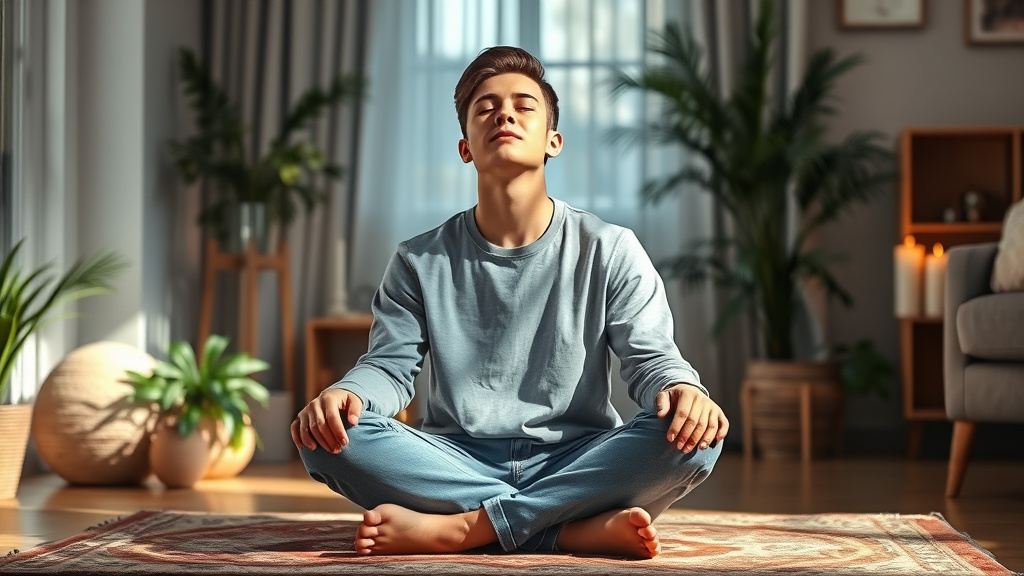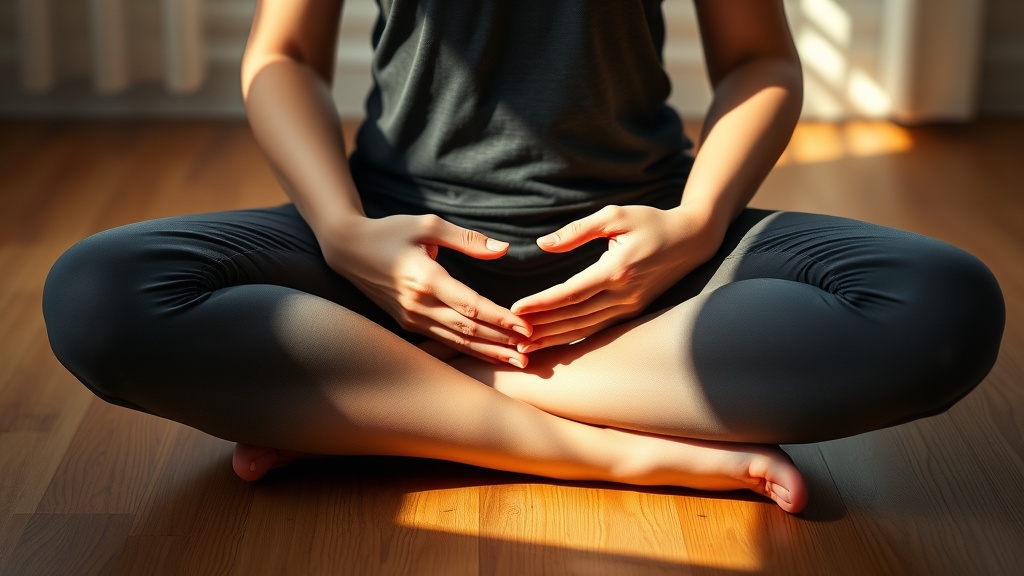Find Your Calm: Meditation for Beginners at Home (2025 Guide)
Embarking on a meditation for beginners at home journey might seem daunting at first, especially with busy schedules and endless to-do lists vying for your attention. However, the beauty of meditation lies in its simplicity and accessibility—no special equipment or memberships required. Whether you’re seeking to bolster mental clarity, reduce stress, or cultivate a more mindful living routine, starting your meditation practice from the comfort of your home can be transformative. This comprehensive guide aims to demystify meditation for newcomers, offering easy meditation techniques, practical tips for building a consistent meditation routine, and insights into how mindfulness meditation can positively influence both your mind and body.
The process of mindfulness meditation at home doesn’t need to be complicated. In fact, the simplest practices—deep breathing exercises, guided meditations, and body scans—are highly effective for cultivating focus and relaxation. As you begin to incorporate meditation into your daily schedule, you’ll find that it becomes a vital part of your self-care routines, helping you navigate life’s stresses with greater ease and resilience. Whether you’re aiming for a few minutes of calm during your lunch break or a longer session before bed, these beginner-friendly techniques are designed to fit seamlessly into your busy life, providing a foundation for mindfulness and emotional well-being.

Meditation at home is a simple way to start your mindfulness journey.
Why Meditation is Powerful for Beginners
The Science Behind Meditation
Science has long shown that meditation can promote profound changes in the brain, including increased grey matter volume in areas associated with learning and emotional regulation. Neuroplasticity, the brain’s ability to reorganize itself, means that consistent meditation can improve focus, decrease anxiety, and even enhance memory. Studies published in reputable sources indicate that mindfulness meditation can help reduce cortisol levels—the body’s primary stress hormone—leading to a state of calm and stability. For beginners, understanding the scientific foundation empowers you to trust the process and commit to regular practice, knowing it has tangible benefits that extend beyond mindfulness into your overall health.
Mental Health Benefits
The mental health benefits of meditation are extensive. Regular practice can help manage depression, anxiety, and even symptoms of post-traumatic stress disorder (PTSD). As you cultivate awareness and acceptance through meditation, emotional resilience builds, enabling you to respond more calmly to life’s inevitable challenges. Beginners often find that meditation also enhances their ability to focus and improves concentration—a crucial advantage in our distraction-packed world. This mental clarity not only supports personal growth but can boost productivity and creativity, making meditation an invaluable tool for busy professionals juggling multiple responsibilities.
Physical Relaxation Effects
Beyond mental health, meditation’s physical effects include lowering blood pressure, improving sleep quality, and strengthening immune function. Deep relaxation techniques activate the parasympathetic nervous system, often referred to as the body’s “rest and digest” state, promoting bodily recovery and healing. For beginners, integrating short sessions of relaxation practices can yield noticeable benefits quickly, encouraging further consistency and motivation. As you develop your practice, you’ll likely notice a more profound sense of overall well-being that extends into your daily life.
Simple Meditation Techniques for Beginners at Home
Breathing Meditation

Focused breathing is the foundation of beginner meditation.
Breathing meditation is perhaps the most accessible form of mindfulness meditation. It involves focusing your attention on the breath—observing each inhale and exhale without trying to control it. This technique helps anchor your mind to the present moment, reducing wandering thoughts and cultivating awareness. To deepen this practice, beginners can utilize deep breathing exercises such as diaphragmatic breathing, which encourages slow, full breaths, calming your nervous system and promoting relaxation.
Guided Audio Meditation
If you’re unsure how to start meditating on your own, guided meditations are an excellent resource. Many apps and websites offer guided sessions that gently walk you through various techniques, including body scans, loving-kindness meditation, and mindfulness exercises. For those new to meditation, guided audio meditations can provide structure, motivation, and clarity, making it easier to how to start meditating daily and establish a consistent meditation routine for beginners. These sessions often include soothing narration and calming sounds, creating an immersive experience that enhances focus.
Body Scan Relaxation
The body scan is a practice that involves lying down or sitting comfortably and systematically bringing attention to different parts of your body. This relaxation practice helps release tension, improves body awareness, and cultivates mindfulness. Beginners can start with a 5-minute scan, gradually increasing duration as comfort and familiarity grow. This technique is particularly effective in reducing stress and enhancing sleep quality, aligning with the goals of many self-care routines.
Mindful Visualization
This technique involves imagining a peaceful scene or a positive outcome as a way to calm the mind. It can be especially helpful for Those seeking relief from anxiety or seeking to cultivate gratitude. Practicing visualization regularly can strengthen your capacity for focus and concentration, making it a powerful pairing with other meditation practices.
How to Build a Daily Meditation Routine
Creating a Calm Space at Home
Designating a dedicated space for meditation fosters consistency and helps signal to your brain that it’s time to unwind. Keep this area tidy, comfortable, and free of distractions. Incorporate soft lighting, a cushion or mat, and perhaps elements like calming candles or incense. Making this space inviting encourages you to stick with your meditation for beginners at home and deeply ingrains it into your daily self-care routines.
Best Time of Day to Meditate

Setting a regular meditation time builds lasting mindfulness habits.
The ideal time varies among individuals, but many find early mornings or right before bedtime to be most effective. Morning meditation can set a positive tone for the day, while evening sessions help unwind and release accumulated tension. Regardless of the time, consistency is key—aim for a regular meditation routine for beginners, whether it’s five minutes or twenty.
Setting Realistic Goals
Starting small and setting achievable goals helps prevent frustration and burnout. For example, commit to five minutes daily, gradually increasing as you feel comfortable. Use guided meditation apps for structure and motivation, or set reminders to hold yourself accountable. Remember, the goal isn’t perfection but consistency—improving step-by-step over time.
FAQs about Meditation for Beginners at Home
How long should I meditate as a beginner?
Initially, easy meditation techniques like breathing exercises can be short, around 3-5 minutes, making it easier to establish a habit. As confidence and comfort grow, you may extend sessions to 10 or 15 minutes, aiming for consistency over duration. Remember, even brief daily practice leads to meaningful benefits over time.
Can meditation replace sleep or therapy?
While meditation offers numerous benefits, it isn’t a substitute for professional therapy or sleep. Instead, it serves as a complementary practice that enhances mental resilience, reduces stress, and fosters self-awareness. It can improve sleep quality but shouldn’t replace medical treatment or therapeutic interventions.
What’s the best posture for meditation at home?
Comfort is the priority; sit with your back straight but relaxed. You can sit cross-legged on a cushion, on a chair with feet flat on the ground, or lie down if sitting causes discomfort. Maintaining an upright posture promotes alertness and facilitates deep breathing, making visualization and focus easier.
Conclusion
Incorporating meditation for beginners at home is a practical, accessible way to enhance your mental and physical health. By understanding the science behind meditation and experimenting with simple techniques such as breathing exercises, guided audio sessions, and body scans, you can develop an effective meditation routine for beginners tailored to your lifestyle. Establishing a dedicated space, choosing optimal times, and setting realistic goals support the formation of a sustainable practice that fits seamlessly into busy schedules. Remember, the key is consistency and patience—over time, patience and discipline transform meditation from a fleeting activity into a lifelong self-care routine, enriching your overall well-being. For those looking to deepen their mindfulness journey, exploring additional resources such as guided meditation apps can offer ongoing support to cultivate focus, relaxation, and emotional balance. Discover more mindfulness practices in our Mental Wellness Hub.
Engaging in meditation not only enriches your mental clarity but also awakens a profound sense of inner calm, ultimately empowering you to face life’s challenges with grace and resilience.
